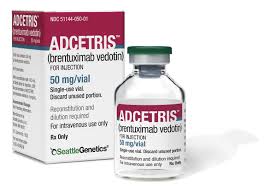Article
Key Components of the Healthcare System: Disease Management and Case Management
Author(s):
Overall, both case management (CM) and disease management (DM) are vital to reduce healthcare costs by helping beneficiaries control their disease and prevent excessive utilization. However, there are differences in their approach.
This article is the first in a series of articles, which aim to provide an overview of key components of the healthcare system.
Overall, both case management (CM) and disease management (DM) are vital to reduce healthcare costs by helping beneficiaries control their disease and prevent excessive utilization. However, there are differences in their approach.
DM can improve quality care for members with chronic disease.2 It facilitates healthy lifestyles by focusing on prevention (eg, modifies risk factors), reducing hospitalization (eg medication adherence), and healthcare access.2,3 CM improves quality and patient experience by coordinating hospital care.1 It ensures that the hospital care utilizes the least restrictive & clinically appropriate alternatives. CM is tailored to the individual and focuses on a single patient; DM is meant for the population, using an integrated, and multi-level approach. DM is for all health plan members, tailored particularly to the 15% to 25% of members at high risk.2,4
DM involves early identification for members in all stages of disease (primary to tertiary prevention).4 Participants typically have moderate acuity levels. DM programs are offered through the health plan or at the IPA/medical group/physician level. For DM programs, unlike CM, there is no need to change plan design. Interventions can take place at any time of the year (365 days), in work or at home; CM is usually episodic care, from 60 to 90 days. CM is offered in hospital clinics, home health agencies, health plan environments, and subacute facilities.3
The constant value for CM is how to defend price negotiating and benefit pricing. DM’s value is the result of behavior changes to improve health.3 DM is driven by members’ disregard to healthy lifestyles and proper medical routines. CM fills the need for transportation, support groups, and community resources. Measures of CM are the length of a single-admission and cost incurred per case. DM metrics are “annual cost per diseased member & disease specific functional status.”3
With DM, insurances consider saving money down the road, since they will not pay for costs (for example) to treat complications of diabetes. Insurances want to invest in preventive cost effective strategies. Overall, DM and CM connect in terms of patient flow. DM keeps patient healthy, reducing hospital costs for the plan. CM gets the patient out of the hospital, healthy, in order to lower costs for the hospital. Hospitals use aggressive CM measures, by monitoring high-risk patients to significantly reduce readmission and mortality rates.5 Heavy emphasis on prevention and CM increases quality of care provided as evident in clinical/disease outcomes.
References
- D’Addario V, Curley A. (1994). How case management can improve the quality of patient care. Int J Qual Health Care, 6(4):339-345. Retrieved from http://intqhc.oxfordjournals.org/content/6/4/339.abstract
- Faxon DP, Schwamm LH, Pasternak RC, Peterson ED, McNeil BJ, Bufalino V, Shine K. (2004). Improving quality of care through disease management: principles and recommendations from the American Heart Association’s expert panel on disease management. Circulation, 109:2651-2654. Retrieved from http://circ.ahajournals.org/content/109/21/2651.full#content-block
- Kongstvedt, P.R. (2007). Essentials of Managed Health Care [5th ed]. Sudbury, MA: Jones and Bartlett Publishers, Inc.
- Powell, S.K. (2000). Advanced case management: outcomes and beyond. Baltimore, Maryland: Lippincott.
- The Basics of Managed Care. (n.d.). Retrieved from http://aspe.hhs.gov/Progsys/Forum/basics.htm#types
Newsletter
Stay ahead of policy, cost, and value—subscribe to AJMC for expert insights at the intersection of clinical care and health economics.




